
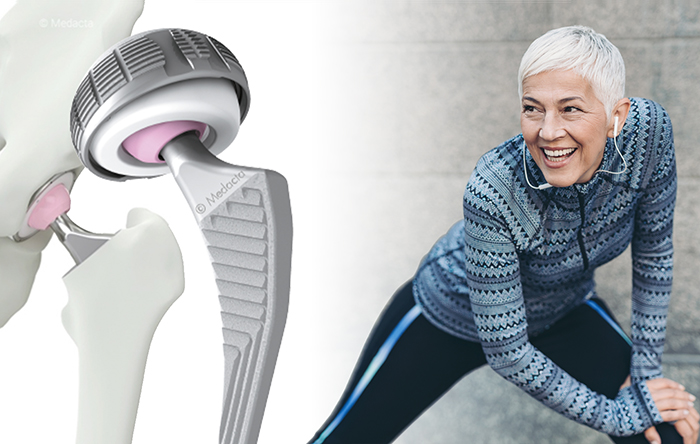
Medacta Anterior Minimally Invasive Surgery (AMIS®) in Hip Replacement
What is osteoarthritis?
The hip joint is formed by the articulation of the rounded head of the femur and the cup-like acetabulum of the pelvis. The main cause of hip joint diseases is the wear of the articular cartilage – osteoarthritis. This wear is perceived as pain.
Hip pain limits your daily activities, affects your mood, your health and your general well-being. In the case of advanced osteoarthritis, your doctor may suggest that you undergo a total hip replacement.
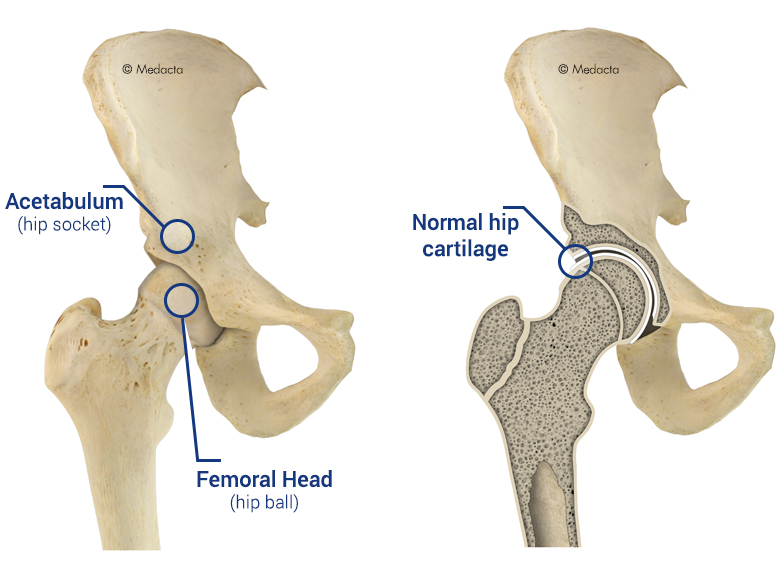
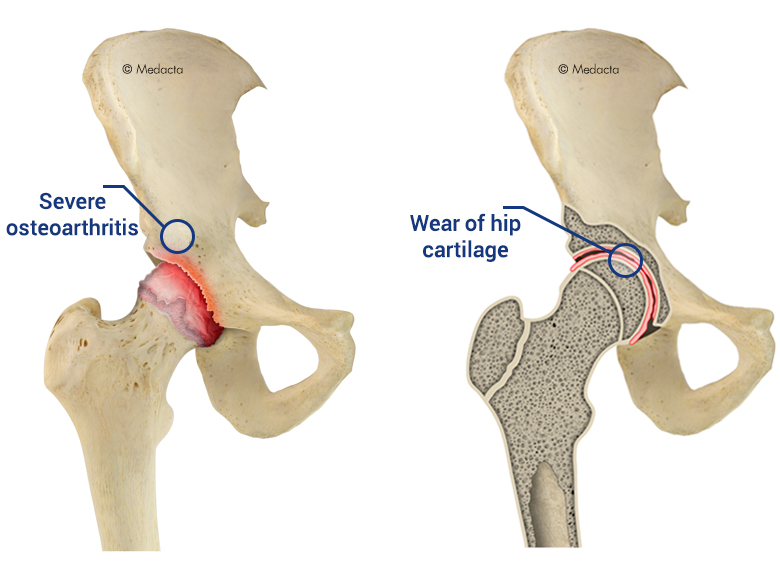
What is Total Hip Replacement?
Total hip replacement surgery substitutes the damaged bone and cartilage of the joint with polyethylene (a plastic material) or ceramic and metallic components.
A hip prosthesis is an artificial articulation composed of a femoral stem with a head (sphere) and a socket cup (acetabular shell and liner, if any).
The femoral stem is made of metal (usually a Titanium or Cobalt Chrome alloy or stainless steel). The head is made of ceramic or metal. The cup consists of 1 or 2 pieces, depending on the procedure: cemented (usually only one component of polyethylene) or cementless (metallic acetabular shell and liner). In the case of a metallic acetabular shell a ceramic or polyethylene liner articulates against the head. All the materials used for hip arthroplasty are highly biocompatible.
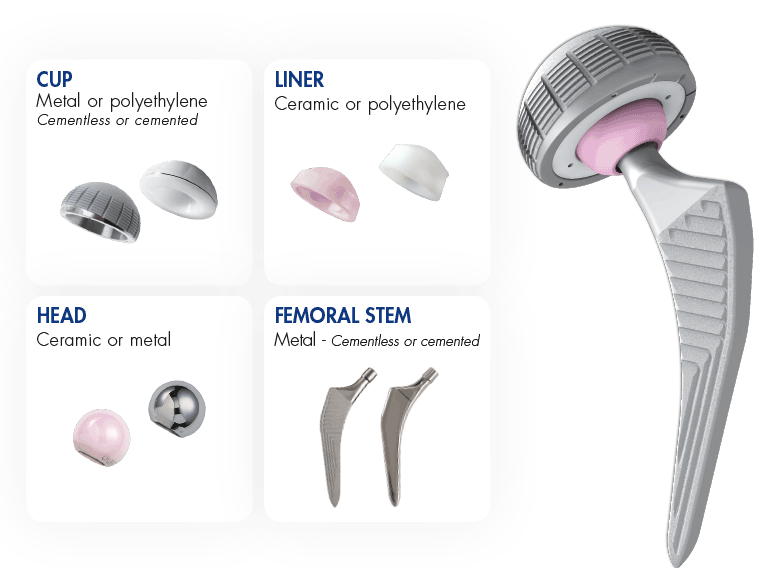
Why an AMIS® Total Hip Replacement?
The AMIS® technique causes less muscular trauma than other techniques because no muscles are cut during the surgery, only displaced.
AMIS® is a surgical technique that will improve the quality of your life and hasten your recovery after a Total Hip Replacement (THR).
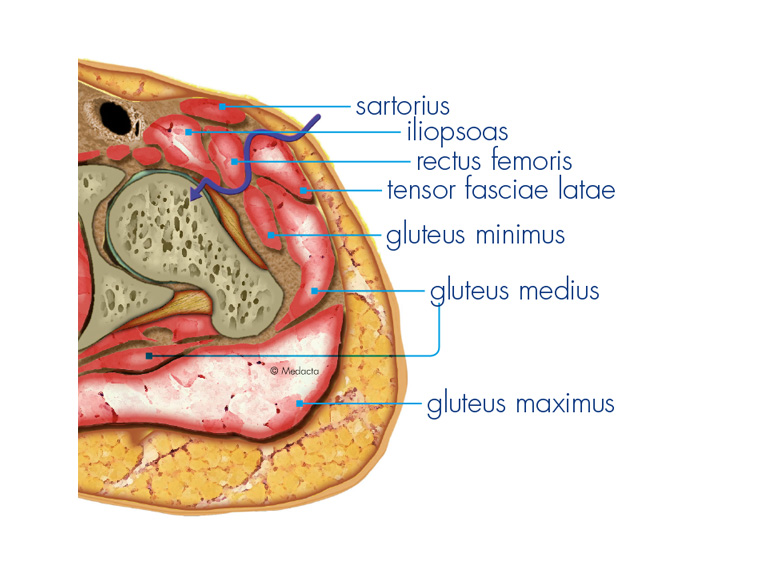
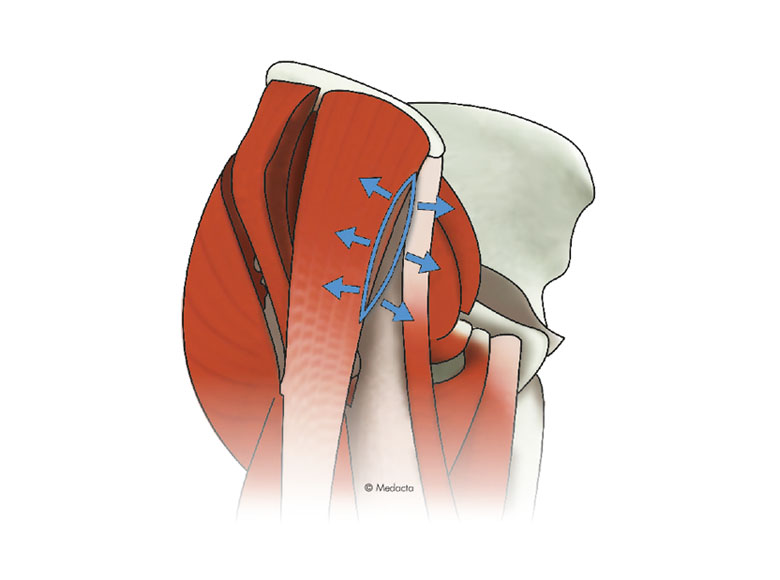
What is AMIS®?
The AMIS® (Anterior Minimally Invasive Surgery) approach is a true inter-muscular, inter-nervous, minimally-invasive surgical technique.
AMIS® can potentially provide you with the following benefits:
- The potential for less pain after surgery as muscles are not cut [1].
- The skin incision is often shorter than with other surgical approaches [4].
- The preservation of muscles and their blood vessels potentially reduces blood loss [3].
- Muscle and nerve damage reduces the chance of limping compared to other surgical approaches [6].
References
[1] Vasina PG, Rossi R, Giudice GM, Palumbi P. Hip arthroposthesis through the anterior minimally invasive approach. Sphera 2010;6(12) – Speciale Ortopedia.[3] Jayankura M, Roty M, Potaznik A, Rooze M, Cermak K, Remy P, Gillard B, Biltiau N, Schuind F. Isokinetic and isometric muscle strength recovery after total hip arthroplasty implanted by direct anterior approach. Podium presentation at the 10th Annual Congress of the EFORT, Vienna, Austria, June 3-6, 2009.
[4] F Rachbauer, Minimally Invasive total hip arthroplasty: anterior approach, Orthopäde, 2006 Jul, 35(7):723-4, 726-9.
[6] Bremer AK, Kalberer F, Pfirrmann CWA, Dora C. Soft-tissue changes in hip abductor muscles and tendons after total hip replacement: Comparison between the direct anterior approach and the transgluteal approaches approaches. J Bone Joint Surg (Br) 2011–July; 93-B:886-9.
Copyright © 2021 Medacta